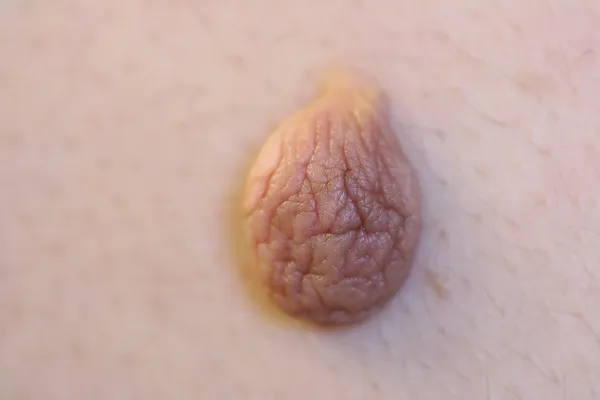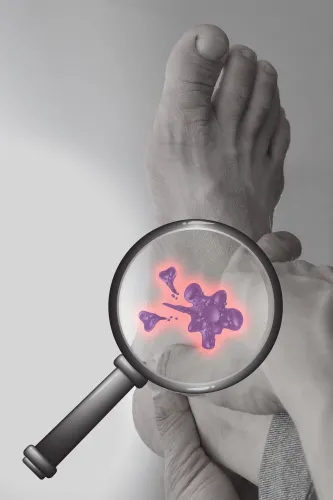Master Melanoma Excision Reports With 3 Tips
Watch for separate repair charge.
If your general surgeons treat some of the more than 76,000 new melanoma cases expected in 2016, you need to hone your coding skills to ensure clean claims.
Because melanoma is a malignant skin cancer that often leads to large, complicated excisions, you’ll face plenty of coding pitfalls that you need to avoid. Let our experts show you the way with the following three tips.
Tip 1: Make Sure Excisions Measure Up
When your surgeon removes a melanoma from the patient’s skin, you should have no problem choosing one of the following code families based on lesion site:
Within each family, you have six codes to choose from based on the combined diameter of the lesion and the excised margin. For instance, you’ll distinguish codes 11600-11606 based on excisions measuring 0.6 to 1.0 cm, 1.1 to 2.0 cm, 2.1-3.0 cm, 3.1-4.0 cm, or over 4.0 cm, respectively. Correctly determining the size of the excision is key to choosing the right code.
Gauge this: “You should identify the code based on the greatest diameter of the lesion plus two times the most narrow margin required,” explains Marcella Bucknam, CPC, CPC-I, CCS-P, CPC-H, CCS, CPC-P, COBGC, CCC, internal audit manager with PeaceHealth in Vancouver, Wash. “The surgeon should note the measurement of the lesion plus margin prior to excision, because the specimen shrinks upon removal,” she says.
Tip 2: Stick to Skin Codes — Usually
Sometimes melanoma doesn’t confine itself to the skin. “Melanoma can spread, unlike basal cell carcinoma, or be so large as to require an excision that requires going through the fascia and possibly removing soft tissue,” explains Pamela Biffle, CPC, CPC-P, CPC-I, CPCO, owner of PB Healthcare Consulting and Education Inc. in Austin, Texas.
Recall tissue layers: Subcutaneous tissue lies below the dermis, then the fascia, and then the underlying muscle. But the depth of melanoma doesn’t determine the proper code choice.
Origin is key: According to CPT® instruction in the Musculoskeletal section (20000 level codes), “For radical resection of tumor(s) of cutaneous origin (e.g., melanoma), see 11600-11646.”
CPT® Assistant Volume 20: Issue 4 reiterates the instruction, directing you to “report the appropriate code from the 11600-11646 series” for radical resection of tumors of cutaneous origin, such as melanoma.
Soft tissue: Both CPT® instruction and the CPT® Assistant article also emphasize that musculoskeletal lesion excision codes describe lesions that originate in and are confined to “subcutaneous, superficial, or deep soft tissues under the skin, which may include subcutaneous fat, fascia, muscle and bone.” So stick with integumentary codes for melanoma that originates in the skin.
Metastasis is different: “Melanoma does spread to lymph nodes and other organs,” Biffle says. For excision of metastatic melanoma, you should code the appropriate organ excision code, such as 38510 (Biopsy or excision of lymph node[s]; open, deep cervical node[s]) for cervical lymph node dissection.
Tip 3: Watch for Closure
Melanoma excision codes 11600-11646 include simple closure, but you should separately bill the closure if the surgeon performs an intermediate or complex repair of the defect created by the excision.
A simple repair generally involves single-layer closure. When you see the term “intermediate repair,” it means your surgeon performed one of two things:
Complex repair procedures involve more than multilayered closure, and include a wide range of possibilities such as scar revision or involved debridement. Complex repair may include extensive undermining, stenting, or retention sutures.
Do this: In addition to the excision code, if your surgeon documents an intermediate or complex repair, you should also list the appropriate code from the range 12031-12057 (Repair, intermediate, wounds of …) or 13100-13153 (Repair, complex …). CPT® distinguishes these codes by body site (such as neck, hands, feet…) and repair length.
After zeroing in on the body site, bill the repair code based on the longest dimension of the wound. This is likely to be quite a bit longer than the excision itself, because surgeons often create an elliptical excision, which is needed for a clean closure. You will identify the total length of the repair and choose the intermediate or complex repair code that matches that length.
For instance: The surgeon creates an elliptical excision on the left arm that is 6 cm long surrounding a 1.5 x 1.1 x 1.0 cm lesion excision with 1 cm margins, and performs a layered closure. You should report the intermediate repair with CPT® code 12032 (Repair, intermediate, wounds of scalp, axillae, trunk and/or extremities [excluding hands and feet]; 2.6 cm to 7.5 cm) in addition to the excision code (11604, Excision, malignant lesion including margins, trunk, arms or legs; excised diameter 3.1 to 4.0 cm).
Code 11604 alone pays $319.73, while additionally reporting 12032 brings in another $307.20 (based on the 2016 Medicare Physician Fee Schedule non-facility national payment rate, conversion factor 35.8043).
Beware tissue transfers: If the surgeon closes a melanoma excision with an adjacent tissue transfer, you should bill only the repair, and drop the lesion-excision charge.
“Tissue transfers such as Z-plasty and W plasty include the excision, since tissue must be removed to obtain the repair,” Biffle notes. Some coders may find this challenging, warns Biffle — what they consider a complex repair may turn out to be a tissue transfer.
Example: The surgeon excises a melanoma of the face and closes the 9 sq. cm. defect using adjacent tissue transfer. You should bill only 14040 (Adjacent tissue transfer or rearrangement, forehead, cheeks, chin, mouth, neck, axillae, genitalia, hands, and/or feet; defect 10 sq cm or less). You should not additionally report an excision code, because the tissue transfer code includes the excision service.




